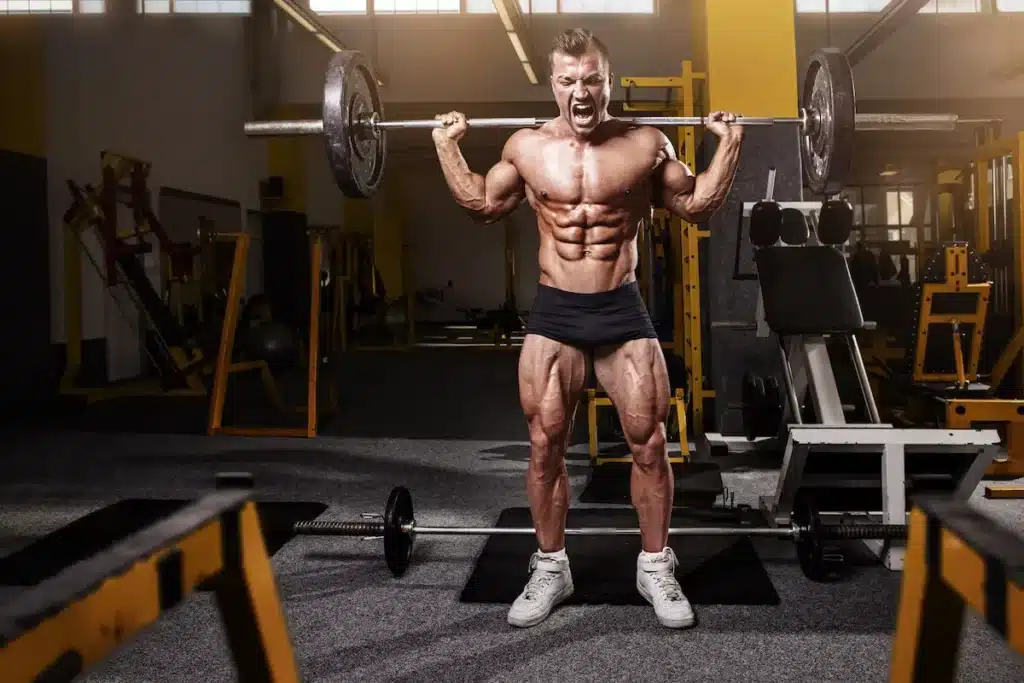Are you curious about bodybuilding training principles for muscle growth? Training principles help bodybuilders and other athletes to reach their muscle-building goals. Bodybuilders use these principles to design training programs. When designing a training program, bodybuilders use these principles are a blueprint, guide map, and starting point for success. To understand muscle building, you must know muscle anatomy and mechanics.
Many principles are similar, with one or two minor details. Resistance training requires a bodybuilder to activate fast-twitch muscle fibers to get bigger because fast-twitch fibers dominate the body. This means bodybuilders must lift heavy weights to get past the slow twitch muscles and activate the fast twitch muscles. You will never get bigger if you can’t target your fast twitch muscles. So how do bodybuilders use the three essential principles to activate fast twitch muscles and build more muscle?

The Sliding Filament Theory
The sliding filament theory was developed by Huxley and is the most widely accepted model for muscle contraction. The theory states that muscle contraction occurs when actin filaments in the sarcomere slide past myosin filaments, causing them to shorten. This process creates tension on the Z-lines of the sarcomere that pulls the thick and thin filaments closer together, resulting in a contraction.
The body uses chemical bonds and receptor sites on the myofilaments to attract actin and myosin. This attraction persists until fatigue breaks it. The sliding filament theory explains how muscles contract without any active motor units. By allowing actin filaments to slide past myosin filaments, a change in length can be produced without needing an action potential traveling through the T-tubules.
The Size Principle of Motor Unit Recruitment
The size principle of motor unit recruitment is the recruitment of the minor motor units first, then moving on to larger ones. This means your muscle fibers are recruited from smallest to largest when lifting weights. This principle helps explain why it’s essential to warm up before working out: it increases blood flow to your muscles and makes them easier to recruit.
The size principle of motor unit recruitment also applies to how muscles work in everyday life. Smaller muscles tend to work first. While larger ones are recruited only as needed. Larger muscles require more energy and oxygen to perform tasks. This principle explains why a person becomes winded after performing squats and deadlifts. The compound exercises recruit the most muscle fiber. Also, this explains why muscle soreness happens when trying more challenging exercises that have never been performed before or have not been performed in a while.

The All or None Theory
The all-or-none theory is a training principle that muscle fibers will respond to exercise with a full range of motion or not at all. Thus muscles either contract or relax. There is no middle ground. Some muscle fibers contract when a bodybuilder performs a partial curl, while others stay relaxed. This principle explains why bodybuilders workout muscles from different angles, speeds, and ranges of motion. The all-or-none principle also reinforces the use it or lose it principle. The more a muscle is introduced to a stimulus, the better it adapts. Therefore, bodybuilders practice muscle confusion because not all motor units are activated in a movement. Also, this principle explains why compound lifts are favored over isolation exercises.
Why is an Understanding of Bodybuilding Training Principles Necessary?
These principles are related to muscle growth; each is an essential part of the process. The all-or-none theory explains how muscles work. When exercises are performed, the brain sends signals through the nervous system to tell muscles to contract or remain relaxed. The sliding filament theory explains why muscles work. Muscles contract when two filaments in the muscle slide past each other, causing tension and movement. In comparison, the size principle of motor unit recruitment explains when muscles are recruited. Smaller muscles are recruited first, and larger muscles are recruited last. Thus these three principles explain how, when, and why muscles respond to exercise and grow.
How Can Bodybuilding Training Principles Be Applied When Designing Training Programs?
These principles show how muscles adapt to exercise over time and why resistance training with compound exercises in the 6 – 12 rep range of 70 -85% of one rep max for 9 to 20 sets each week is the best stimulus for muscle growth. Creating the maximum amount of stress for a muscle group for the most extended amount of time activates the largest amount of muscle fiber for muscle hypertrophy.
The Last Word on Bodybuilding Training Principles for Muscle Growth
To sum it up, the principles laid out above explain the anatomy and mechanics of muscle growth. They provide the blueprint that every successful training program must follow. As such, tailoring a program to an individual’s needs based on the principles in this article will yield the best results.




